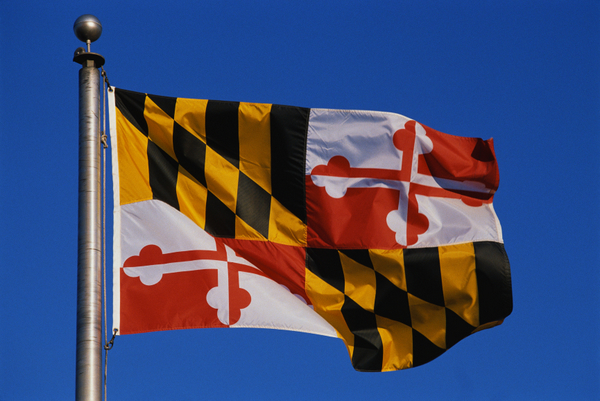How extreme weather is changing homeowner views on climate change (and what they are doing about it)

Extreme weather has prompted most Americans (54%) to worry more about climate change. Over the past 12 months, extreme weather––ranging from heat waves to forest fires to unexpected frigid temperatures––caused home damage or higher electricity bills for nearly half (41%) of homeowners.
A new survey of more than 1,100 homeowners conducted by Sense found that nearly half (48%) looked for ways to reduce electricity consumption and took practical steps such as maintaining or upgrading their HVAC system (29%) or tightening up their home’s envelope with insulation or upgraded windows (27%). But costlier upgrades that could reduce energy bills and carbon impact were not on the menu––with only 11% replacing their current HVAC system with a heat pump in the past year.
Simple measures were overlooked too: less than half (44%) turn off home electronics when not in use and even fewer (11%) use a utility app or home energy monitor to track their energy usage to find ways to save.
Extreme weather prompts costly changes by a third of homeowners. In one area, many homeowners made expensive investments: hardening their homes against extreme weather impacts. A third (33%) of homeowners made costly improvements to protect against wildfires and power outages, such as adding a backup generator, solar panels with battery backup or fireproof siding or roofing. The cost of these updates can be thousands of dollars. The vast majority of these homeowners (71%) took action to address the impacts of extreme weather.
According to NOAA, disaster events during 2020 caused $95 billion in damages, more than double the 41-year average of $45.7 billion. There were a record number of named Atlantic storms, as well as the largest wildfires recorded in California.
Tornado Alley residents took a big hit from extreme weather. Tornado Alley in the Midwest and South has been hammered by record-breaking storms and frigid winters in the past year. Homeowners there reported bigger impacts from extreme weather than any other region of the country. Seventy-six percent (76%) of homeowners in the region personally experienced extreme weather (compared to 53% in the rest of the country) and most homeowners (59%) reported they were feeling it in their pocketbook with higher utility bills or home damage (compared to 36% in the rest of the country).
It’s perhaps no surprise, then, that the vast majority (78%) who made changes to their homes in the region over the past year aimed to save money, and only a fifth (20%) had a goal to reduce carbon emissions.
Survey highlights:
- Most homeowners (59%) believe that they can have an impact on climate change.
- Nearly half (48%) looked for ways to reduce their home’s electricity consumption in the past year.
- Fifty-eight percent (58%) of homeowners have personally experienced extreme weather such as heat waves, forest fires or unexpected frigid temperatures in the past year, and 54% are more concerned about climate change as a result of extreme weather.
- Extreme weather increased utility bills or damaged the homes of 41% of homeowners nationwide.
- Only a quarter (27%) of homeowners nationwide chose reducing carbon as a primary goal of changes to their home; 71% cited cost and energy savings.
Homeowners take practical steps to reduce energy. While many homeowners (48%) looked for ways to reduce their home’s electricity consumption or took steps to improve the efficiency of their heating and cooling systems, other potential changes that could have an impact were overlooked.
- Vampire power sipped by consumer electronics and other devices that stay on continuously in the home accounts for 23% of the average home’s electricity bill, but only 44% of homeowners surveyed say they turn off consumer electronics when not in use.
- Only 12% replaced their HVAC system with a heat pump, a far more efficient approach than conventional systems. Experts say that heat pumps will be a key technology to adapt homes to climate change.
- Just 11% took the easy step of using their utility’s free app or a home energy monitor to track their energy usage and get more insights into exactly what’s using most of the energy in the home so they can address it.
- About a third (29%) of homeowners had installed smart thermostats in the past year.
- According to the EIA, more than half (51%) of an average household’s annual energy consumption goes to just two energy end uses: space heating and air conditioning. In the last year 27% of homeowners added insulation or upgraded windows and 29% upgraded or maintained their HVAC system. Tightening the home’s envelope and making HVAC systems more efficient can have a substantial impact on home energy usage.
What homeowners can do to reduce their home energy costs and impact climate change. Most homeowners think they can have an impact on climate change, and they’re right. Residential energy use accounts for roughly 20% of greenhouse gas (GHG) emissions in the United States. Reductions will make a significant impact.
To slow climate change, experts say the country will need to electrify everything. Instead of burning carbon emitting fuels like natural gas and heating oil in homes, we need to move to heating and cooling from heat pumps, transportation in electric vehicles, electricity from photovoltaics and low carbon energy flowing from the grid.
While today’s electricity supply from the grid is a mix of fuel sources, including those same carbon emitting sources, over time the grid is shifting to low carbon energy. The shift to electrification of homes and transportation takes advantage of this major, centralized shift to low carbon energy sources.
The transition is already underway and consumers can expect to see significant incentives from state and federal governments as well as businesses. Technology advances like smart thermostats and smart home energy monitors will also help consumers to manage their home energy more efficiently while making their homes more reliable.
Survey Methodology
The survey of 1,142 homeowners was conducted by Sense via SurveyMonkey. The region dubbed Tornado Alley includes North Dakota and Minnesota south to Texas and Louisiana, and the states of Kentucky, Tennessee, Mississippi and Alabama; in other words, US Census regions West North Central, West South Central and East South Central.





Weather is changing, it always does! The Earth has a Unique ability to try to balance the World. Unfortunately, there are people being PAID to disrupt the Earth – Arson Fires are on the rise, Timber Harvesting for foreign country companies is increasing, cutting trees for Solar view shed is common, improper ways of filling oil drilling wells causing Earthquakes, and so on. On top of that Natural increase of Platonic Movement and Volcanoes not helping the warming of the Oceans [once a major volcano goes off it will change from Global Warming to Global Freezing. The biggest Solution is extend the concept of Arbor Day – Plant, Plant, Plant more Trees and other Vegetation. And STOP the Human Interference.